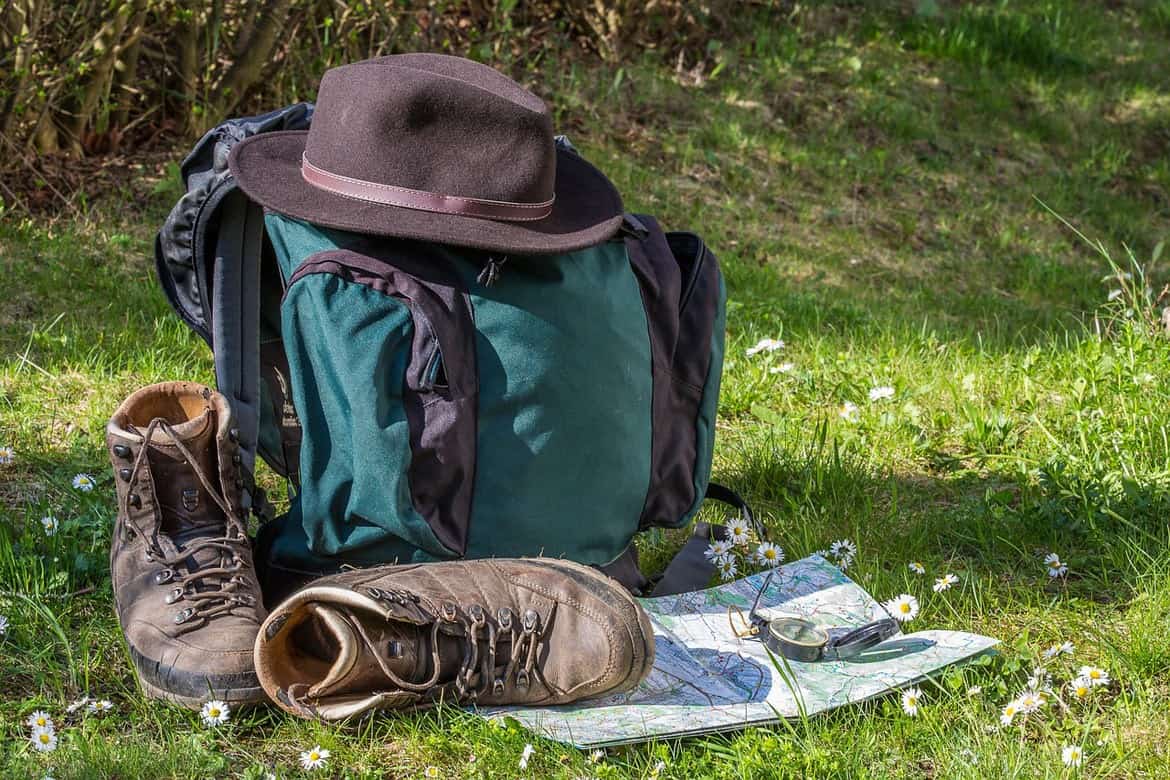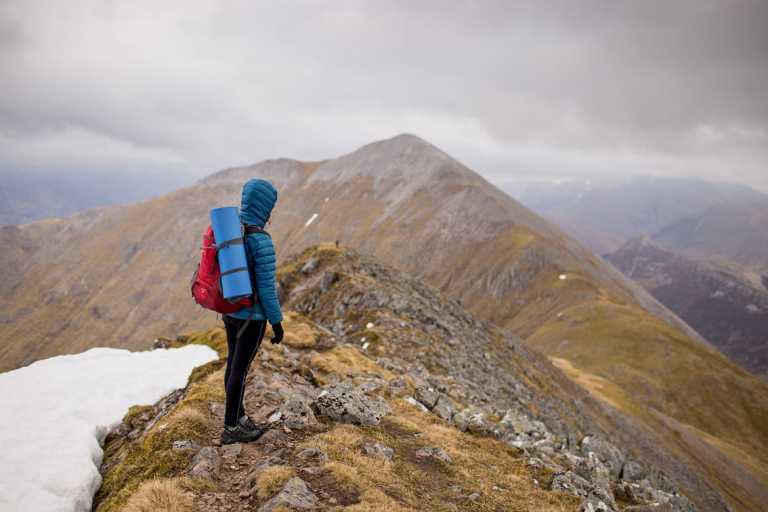When headed out on a long hike, it’s easy to think you might need more gear than you do for a short hike.
You might be tempted to pack more clothes or to plan for various weather scenarios.
However, if you choose this route, you’ll soon discover that, in all likelihood, most of the extra essentials you’ve packed will go unused, and you’ll wind up frustrated and sore from carrying the excess weight for so long.
What’s a prepared hiker to do?
For most hikers, the ideal pack for a long trek weighs one-fourth of their body weight, one-third if they’re in really great shape and can handle the load.
Even still, there’s a well-known mantra among hikers that goes something like this: make a list of everything you need and get rid of half of it.
While that gives you a general picture of your goal, it doesn’t give you specific steps to accomplish the task of packing lightly, so to help you out, here are some tips for your next long hike.
Take Inventory
One of the first things you should do is gather all your gear and supplies and lay them out before you.
Taking inventory this way allows you to see the overall size of various necessities. It will enable you to pick up each of the essential items and consider their relative weight.
If you find (and you probably will) some of your older equipment is on the heavier side, it’s time to take a look at your budget.
Consider purchasing, for example, a backpack that weighs less, ideally one that is less than two pounds.
Hiking gear manufacturers are always looking for ways to make equipment lighter and easier to handle.
Unfortunately, the lighter a piece of equipment is, the more expensive it usually is as well.
Do the same for other large items such as your sleeping bag, tent, and jacket.
If you discover your equipment weighs more than you’d like it to, and your budget allows for it, replace one or two of these items before the big hike.
When you have all the necessities set out before you, make a list of the smaller items you would like to have access to without unloading your pack and digging around.
These are the items you find yourself continually using that are small and relatively light.
For these supplies, you might consider the ultimate fashion statement, the fanny pack.
Also, think back on your most recent hikes and leave the things you packed but didn’t use at home.
From here, packing lightly really boils down to just a few steps.

Share the Weight
If you’re heading out on this hike with a group, make a list of the heavier items (pots, pans, tents, etc.) and split them up amongst yourselves.
Aside from the company, sharing in the weight of your supplies is one of the most significant benefits hiking with friends brings you.
Download as Many Resources as Possible
Guidebooks and maps are not light. The paper itself isn’t light.
So why bring it along when you have another option? Before you head out, decide which resources you can reasonably leave at home in favor of an electronic version.
You’ll want to do this ahead of time, of course, because who knows what the reception will be like once you’re out on the trail.
A quick search on iTunes (and Google Play for Android apps) reveals that you can download everything from a compass to a trail guide to ranger station information.
To protect your information, including the location of your hike, make sure you download these apps and other resources with the security of a proxy service.
However, keep in mind that knowing how to navigate, a paper map, and a compass does need charging, and you need to know to navigate anyway.
Pack for the Weather
Freak storms happen. But they are just that, freak, as in unpredictable and entirely out of the ordinary. With that in mind, pack for the weather of the location.
Don’t pack for what might happen. Don’t pack for what happened last year at this time. Pack for the season, and pack for the expected weather patterns.
If the worst should happen and you find yourself in weather that is unseasonably warm or cold or stormy, you and your hike mates will use your hopefully well-honed survival skills to figure out a solution.
Also, in case of a storm, don’t pack cotton.
Pack lighter fabrics that can be easily layered, such as polyester, which dries faster.
Consider Different Shoes
This might be controversial, and it might be a question of season and terrain, but consider leaving the bulky hiking boots at home.
Now, technically, you aren’t packing your boots; you’re wearing them. However, even if they’re on your feet, they add weight to your body that might not be necessary.
If you can get away with it, opt instead for a pair of light but sturdy, athletic shoes. The right pair will provide support and protection without the extra weight you might not need.
Keep in mind that not wearing proper hiking boots/shoes may lead to severe injury and discomfort.
You need to know your terrain. Athletic shoes also vary, and you need to find ones that are suitable for hiking.
Leave the Fancy Tech at Home
A long hike, especially if it’s through a particularly picturesque location, might feel like the perfect opportunity to take some beautiful photos.
But do you need the added weight of a fancy camera body, not to mention the various lenses? Additionally, leave the book light at home, and don’t even think about bringing along a tablet or laptop.
Remember, it’s not just the device; it’s the chargers and battery packs as well.
Enjoy nature and leave unnecessary gadgets at home.
When it’s all said and done, go back to the old hiking mantra: make a list of everything you need and get rid of half of it.
If you do this, you’ll likely find what you’re left with is precisely what you need for the trail. Your muscles will thank you for it.
Also read:
- How to Select the Best Hiking Hats
- After Hike Recovery: 10 Essential Tips on How to Ease the Agony
- 15 Best Outdoor Survival Gear
- Best Travel Shoes For Europe
Bio:
Cassie is a freelance writer and outdoor enthusiast. As a mom who loves to bring her daughter to the great outdoors, she’s become a pro at packing all the essentials as lightly and compactly as possible.

So let me get this right, you want to put your trust in an electronic device for your navigation and leave your hiking boots at home. Great when it runs out of power or you trip because haven’t got correct footwear on and smash the screen!
And people wonder why the Mountain Rescue teams are so busy, honestly this article is absolutely shockingly naive and underlines the lack of skills from the person writing. It would also be good to highlight having a survival bag with you just encase!
Folks for your own safety always carry a map and compass and learn how to use them before setting out for the great outdoors!
Hi Dave. We totally agree and indeed these things are needed. We have mentioned the need to know how to navigate with or without a GPS, plus the importance of proper hiking boots/shoes per case in our other articles. This post was a guest post by a friend who wanted to share her experience. We welcome all opinions and we like when people contribute to discussion.
I have never had a problem with lightweight hiking shoes like Merrell… Although I prefer lightweight / breathibility over ankle support – Others may have different priorities. I also love the Deuter Race EXP Air backpack for the same reason (lightweight / breathability). Following the same theme for headgear, I recently discovered the Urban Canairie sun hat – This lightweight hat keeps you cool and protected from the sun. Personally, I hate wearing a baseball hat because they make your head so hot and sweaty. The Urban Canairie has mesh ventilation high on the hat, so its really effective.